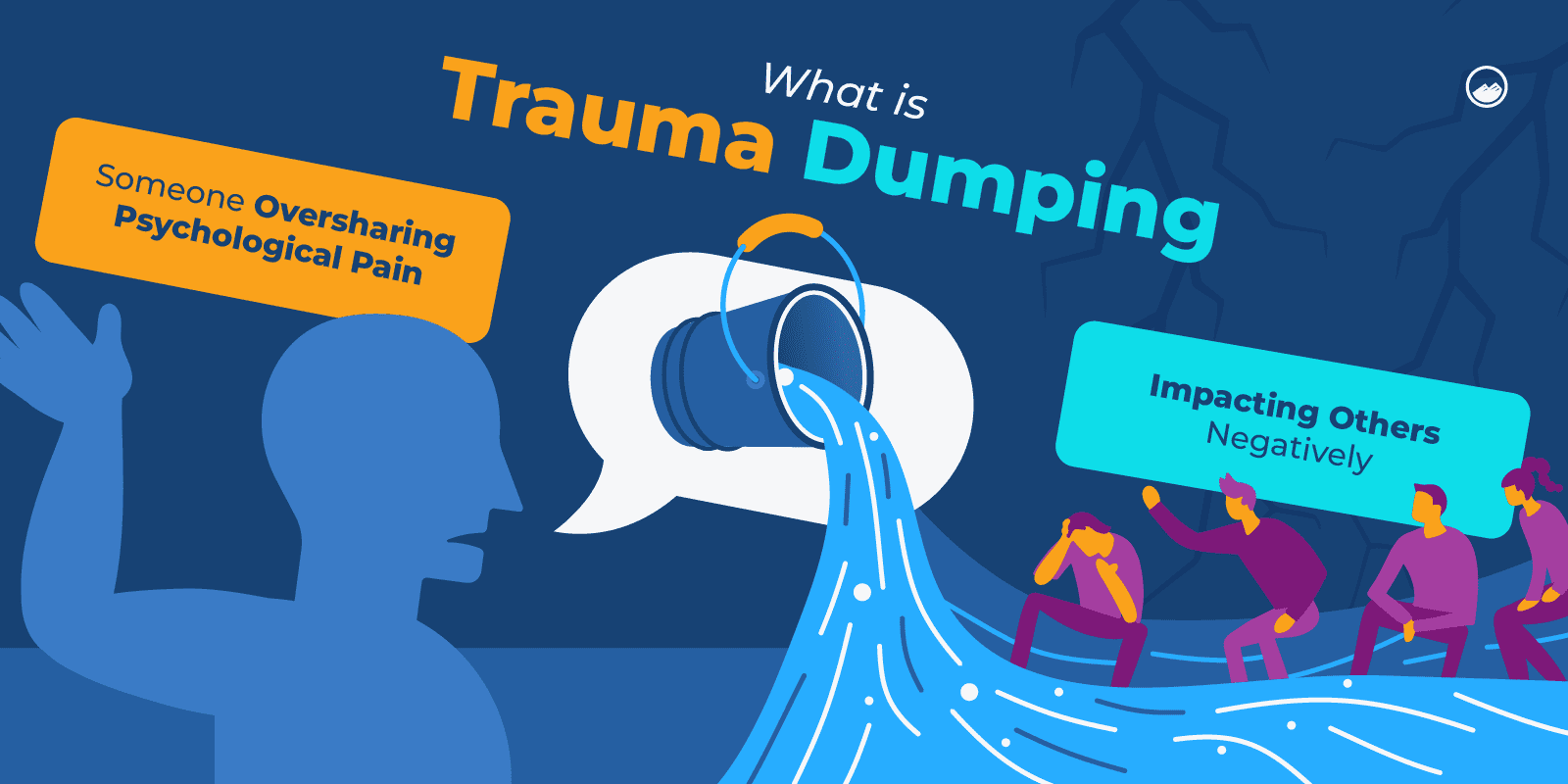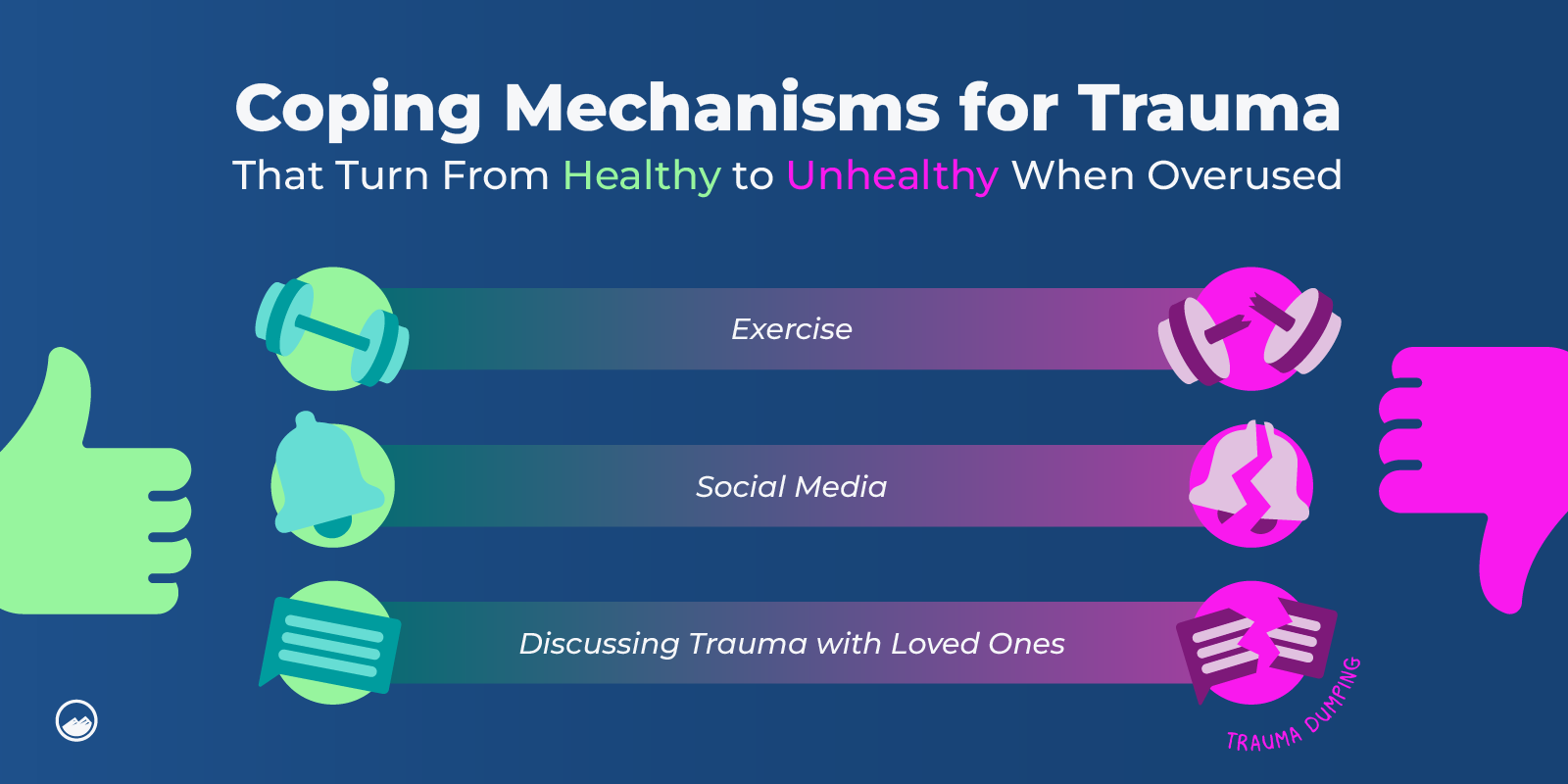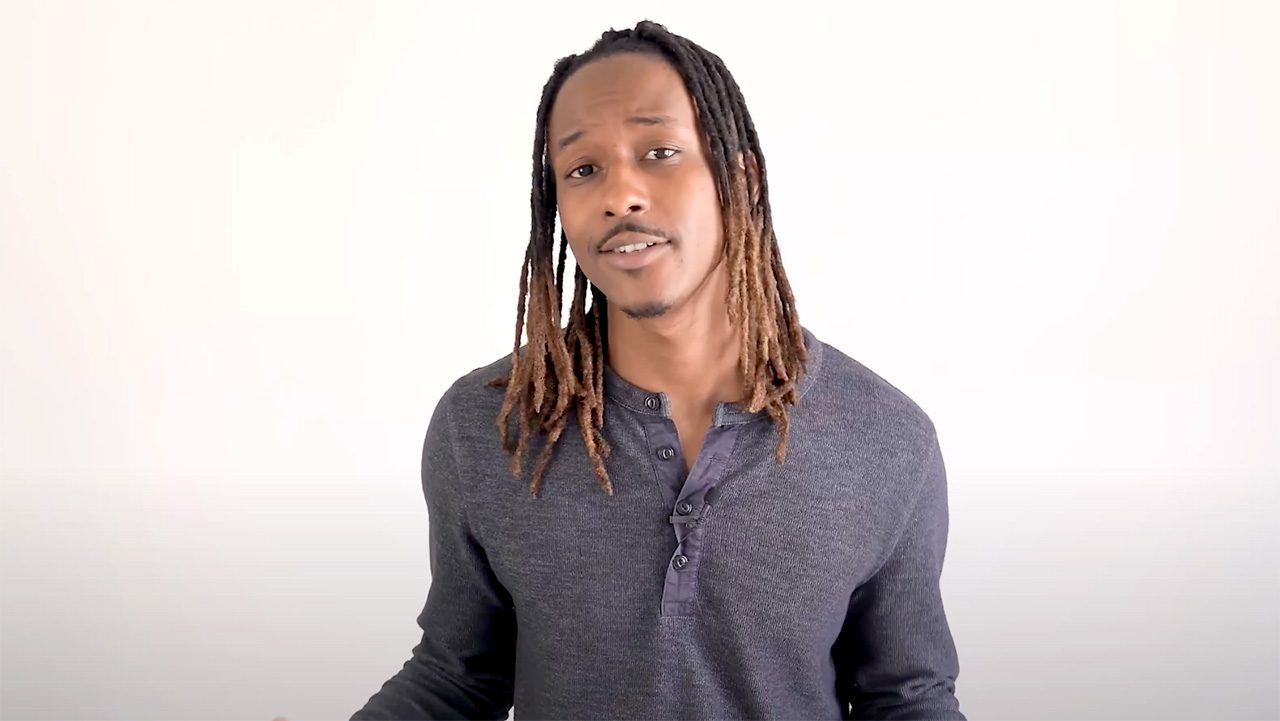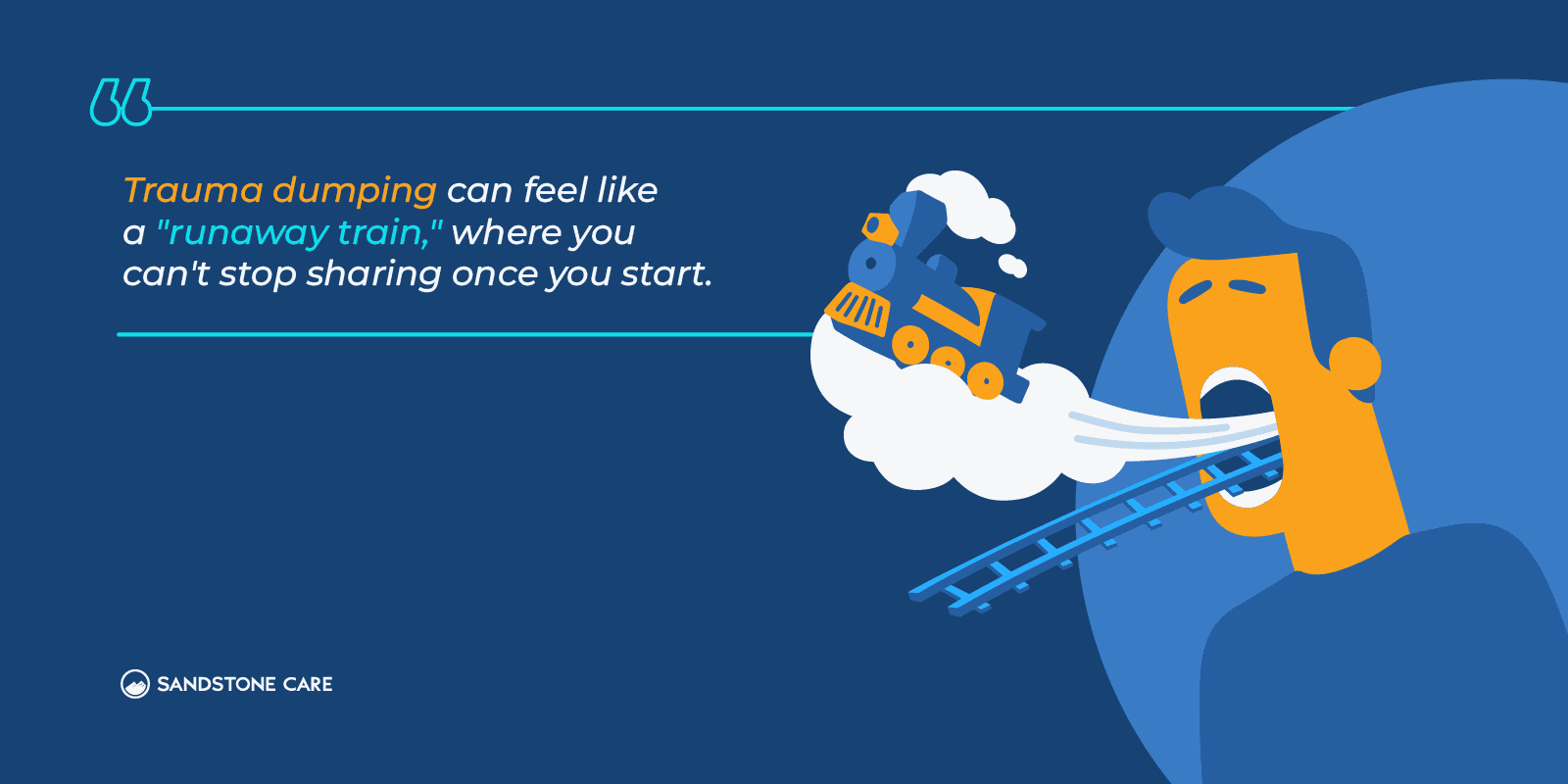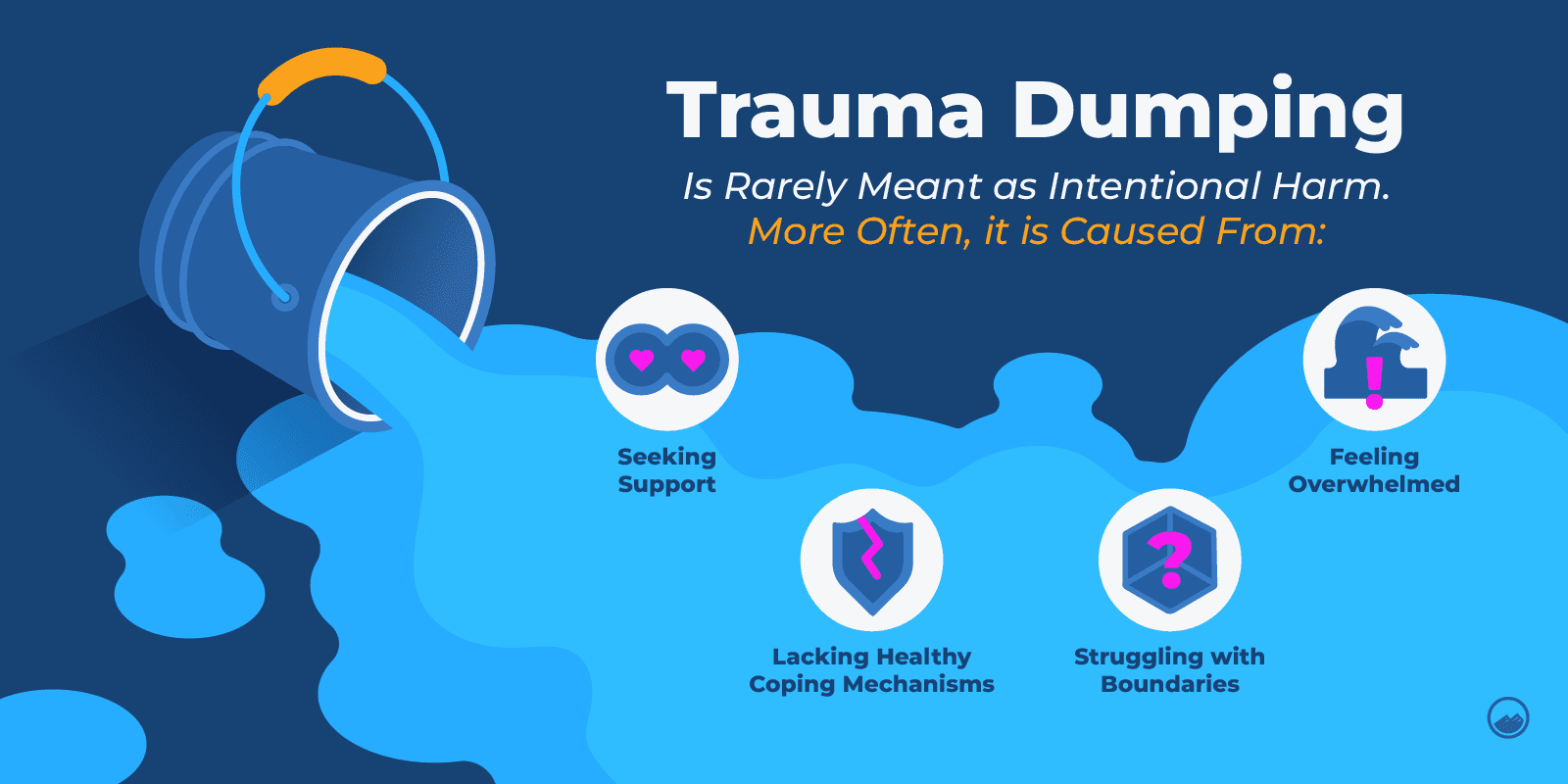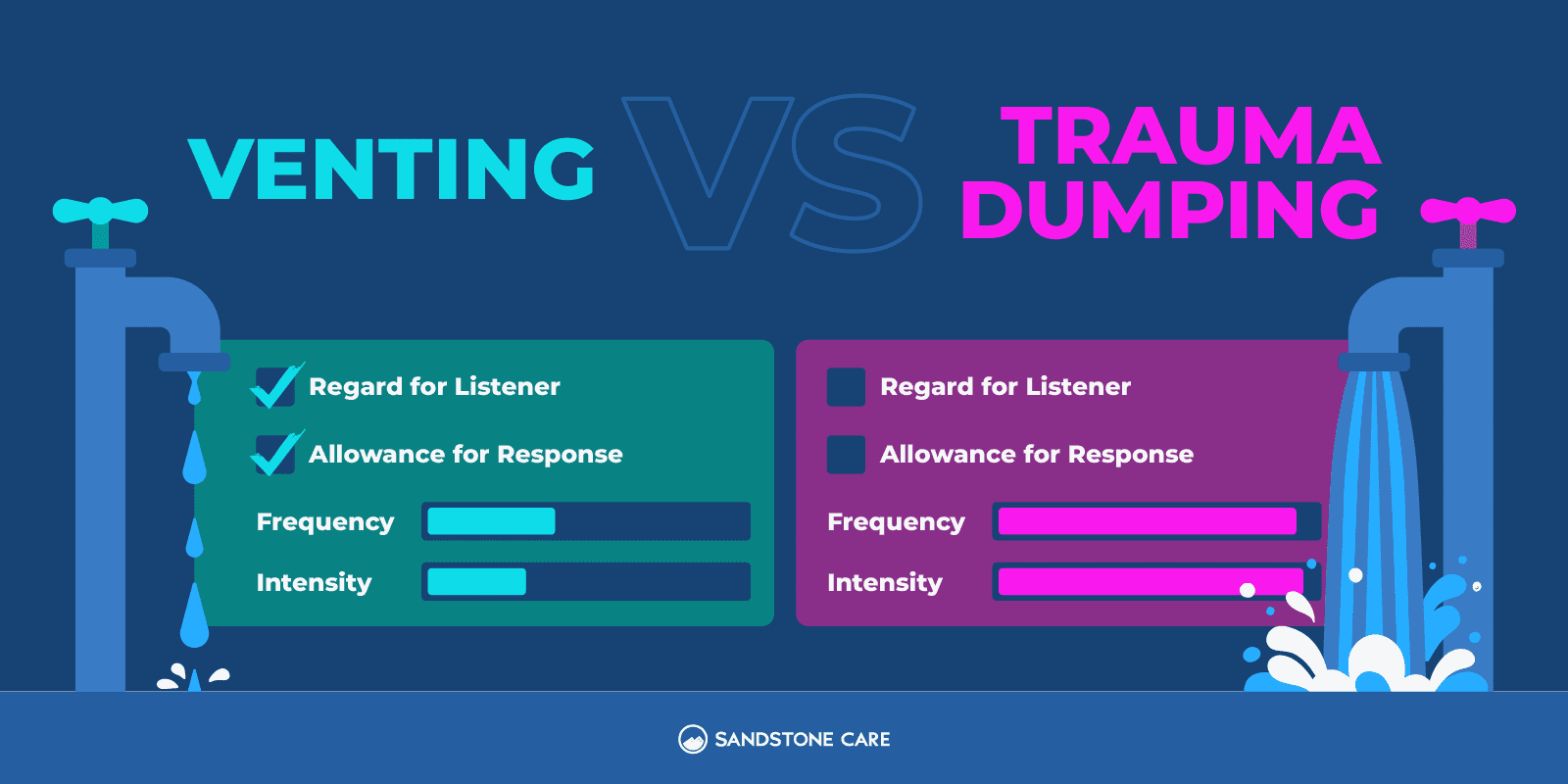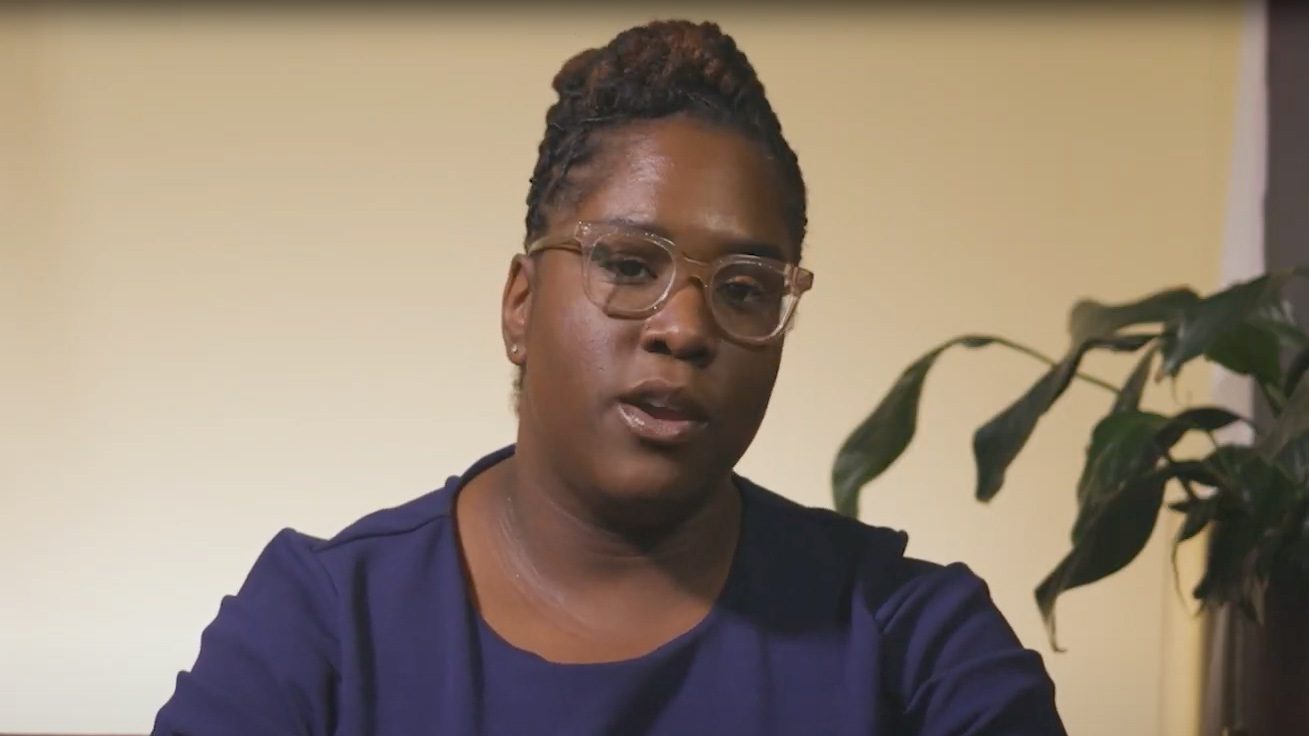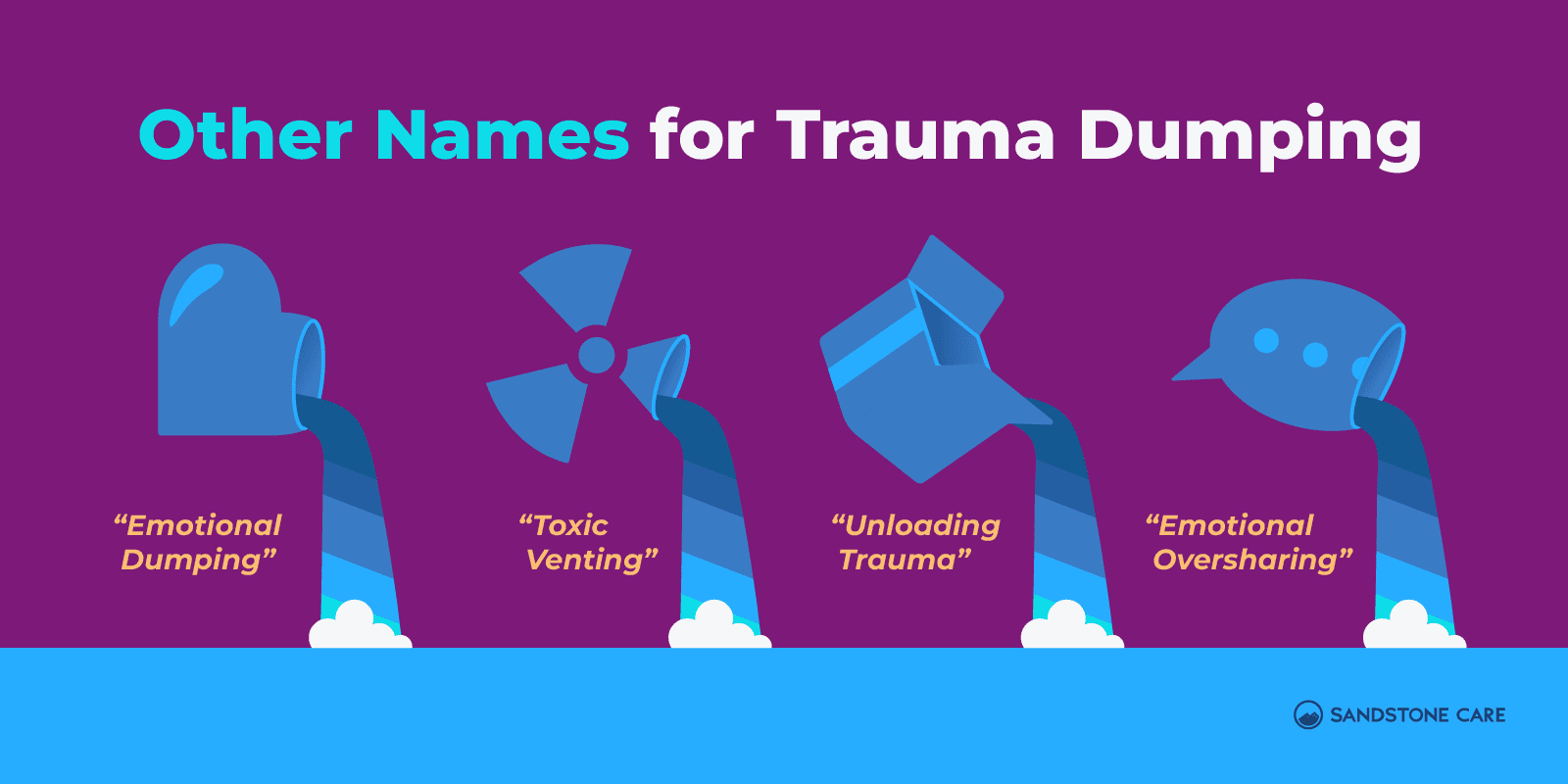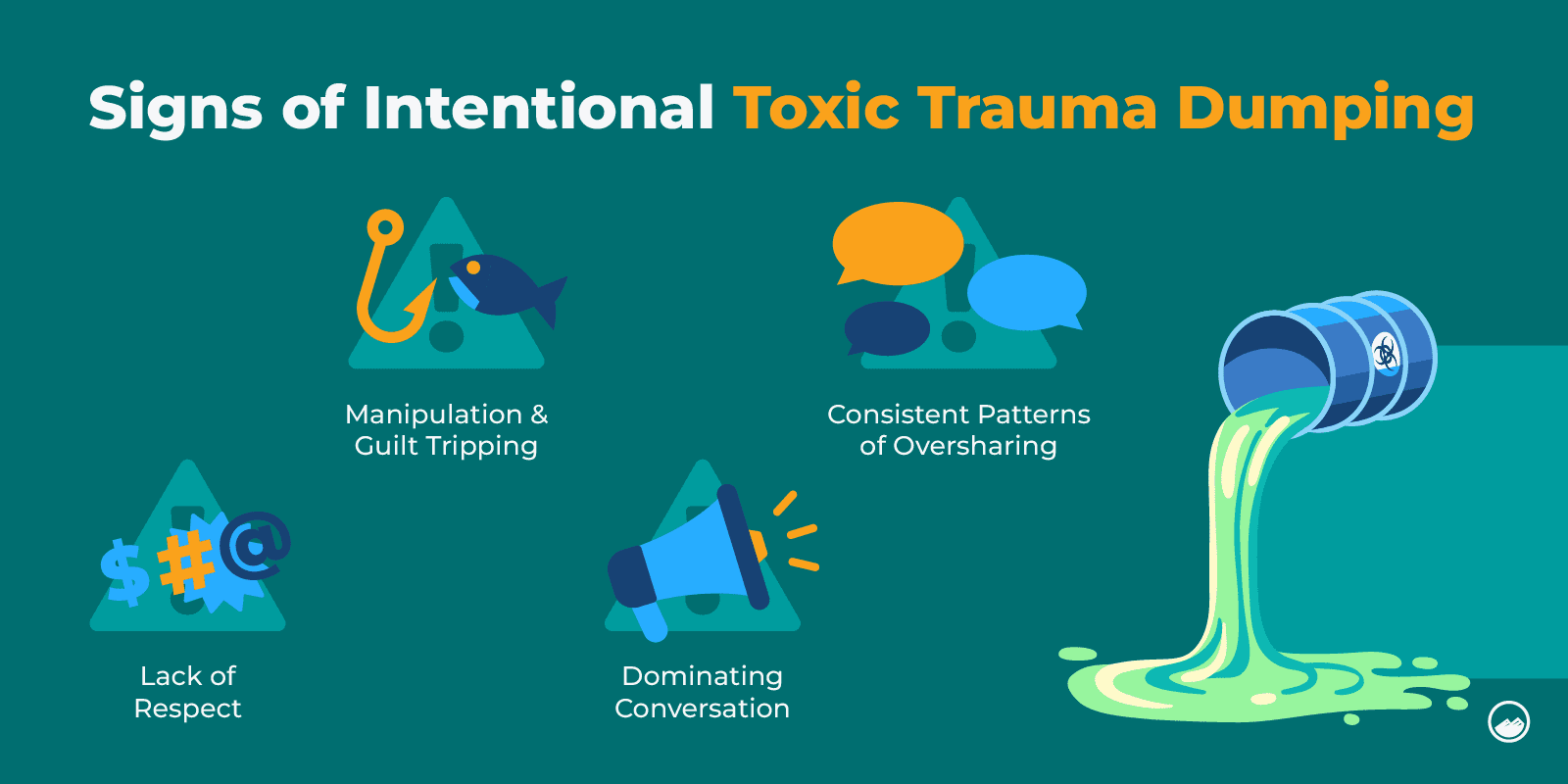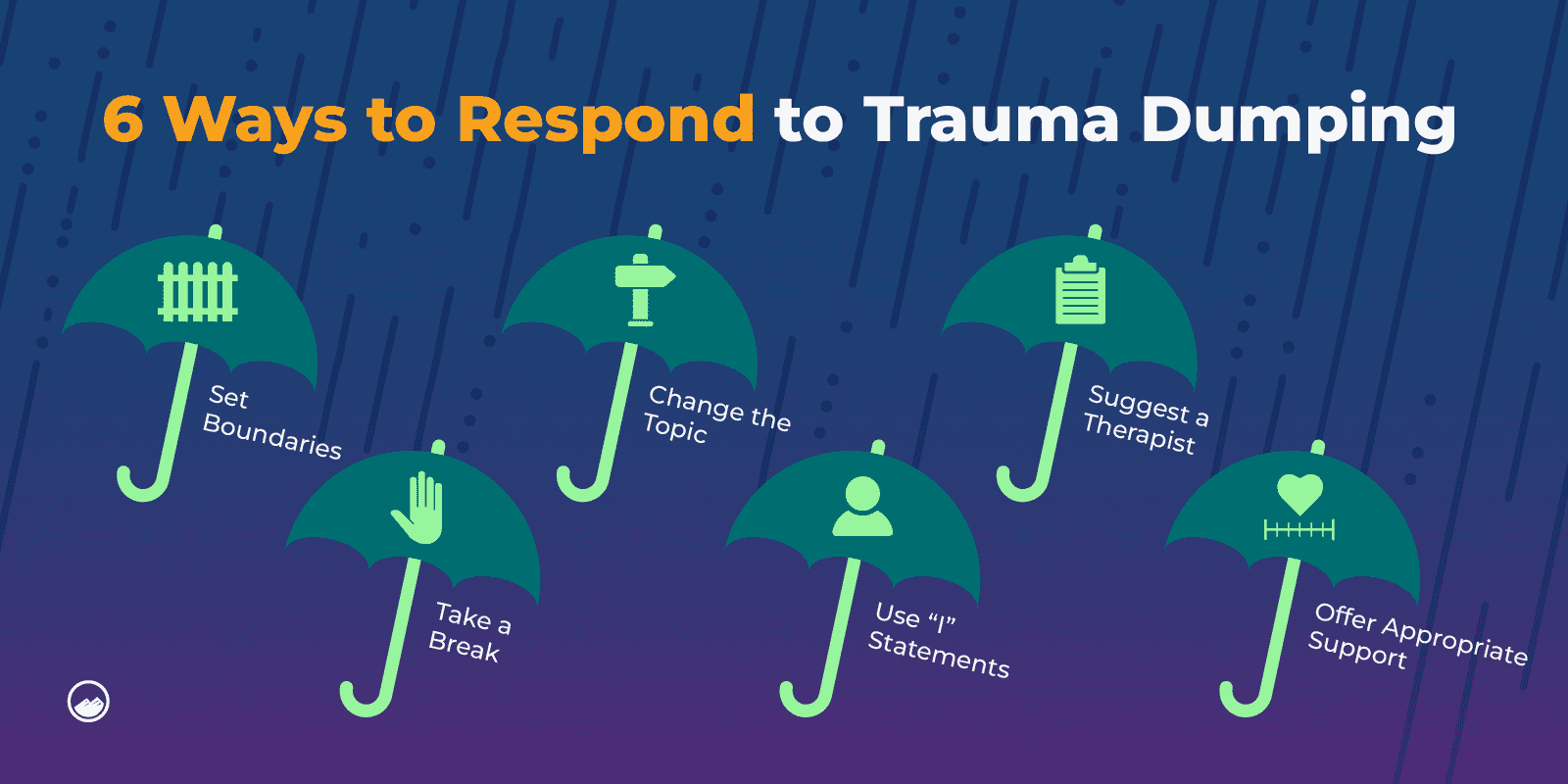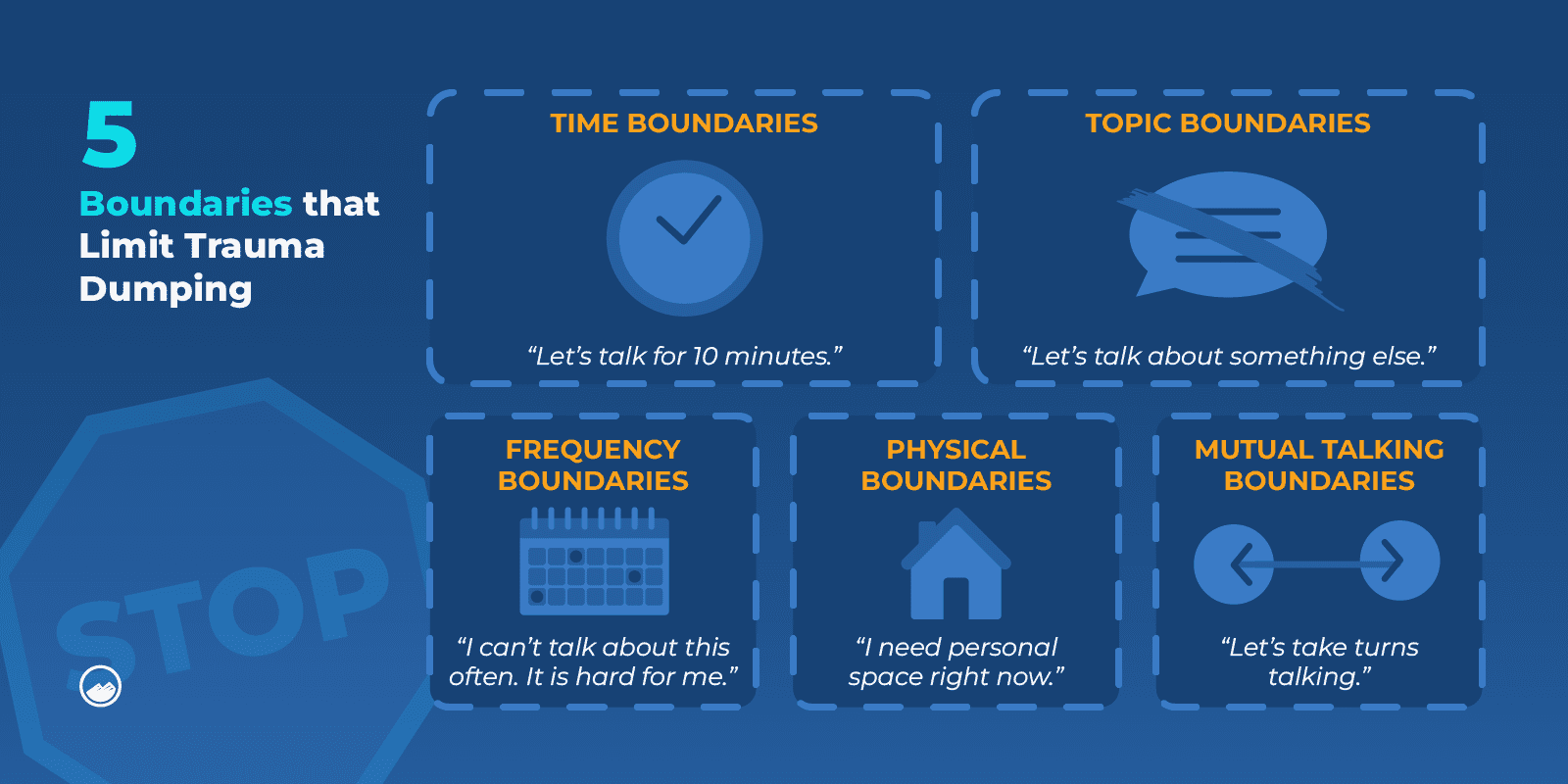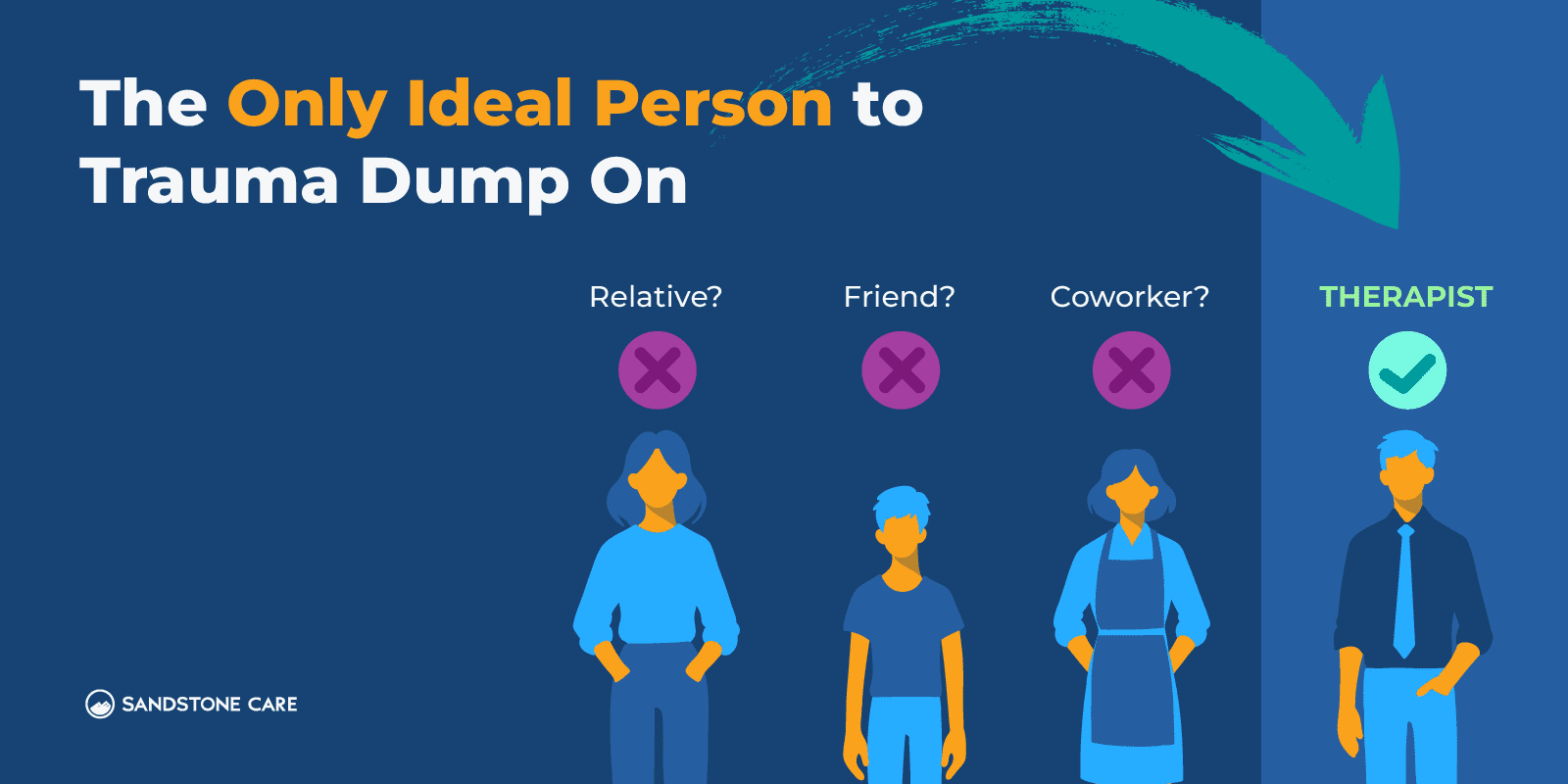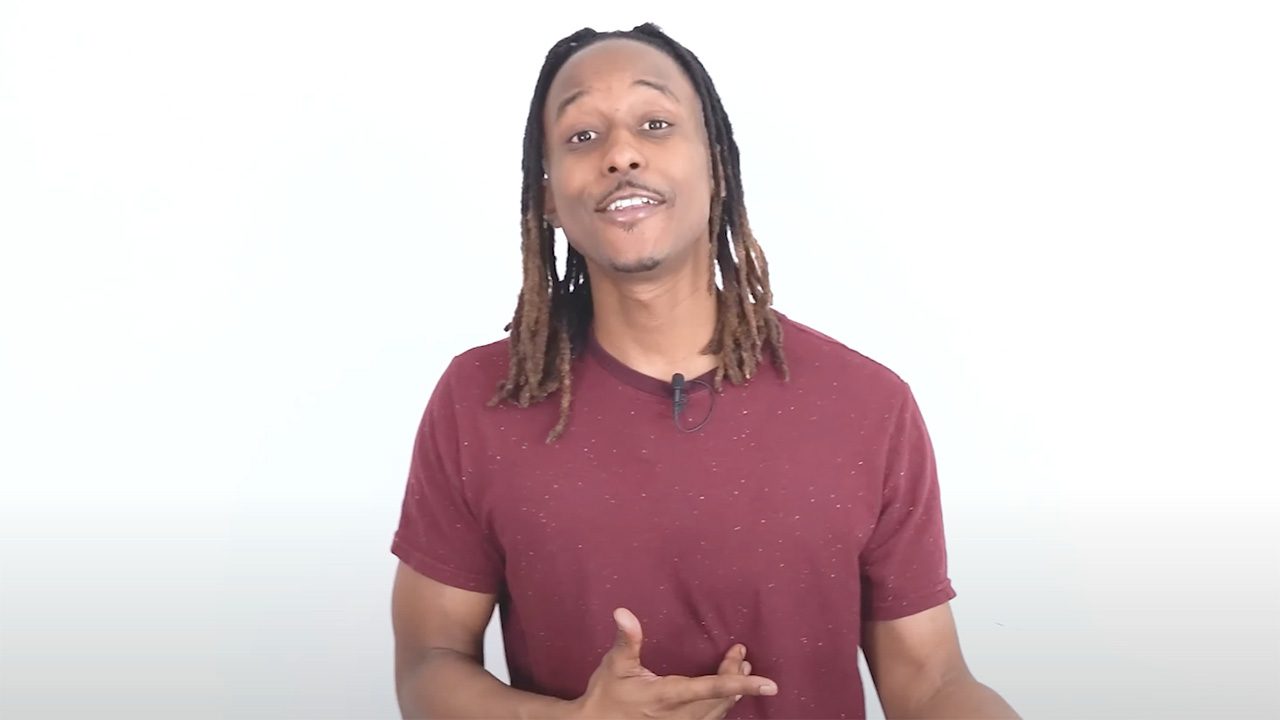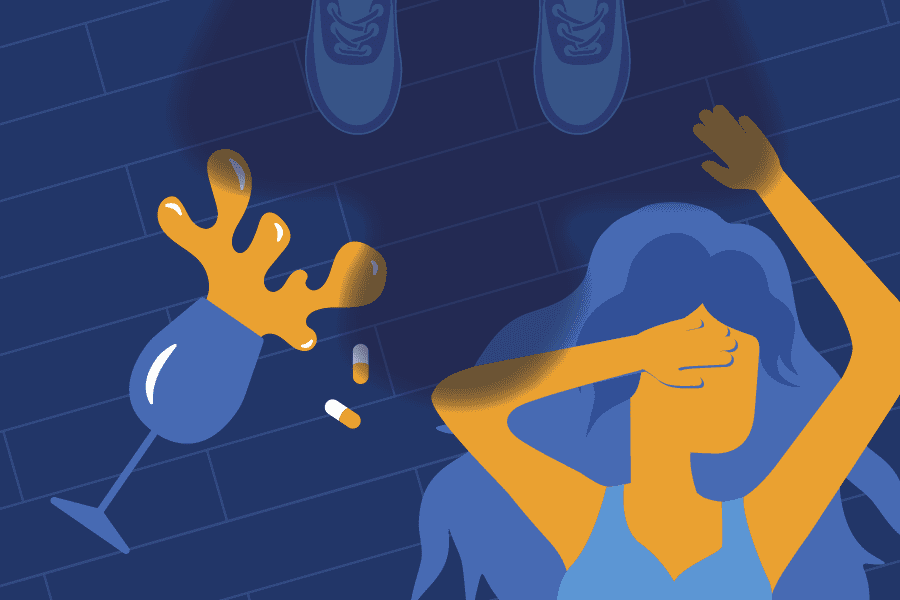Trauma Dumping Overview
What Is Trauma Dumping?
Trauma dumping is the sharing of traumatic events with others without regard for how it may affect them emotionally.
Trauma dumping usually happens in conversations where someone may ignore the discomfort of the other person.
Oversharing traumatic experiences may also display disregard for the situation or environment, such as inappropriately bringing up traumatic events during parties or light-hearted events.
Is Trauma Dumping Selfish?
Yes, it can be. Trauma dumping can dominate conversations and subject others who may not be ready to engage in such heavy topics.
This can come across as selfish in how it disregards the emotional and mental health of others.
However, those who are trauma dumping often do not intend for their actions to be selfish.
Instead, those who are trauma dumping are usually navigating difficult experiences and are unable to process their emotional impact healthily.
Is Trauma Dumping Bad?
Trauma dumping can often pass on intense emotional burdens and stresses to friends, family members, or even coworkers.
Not only can trauma dumping negatively affect the emotional health of others, but it can also strain the relationships of the person sharing.
Trauma dumping also does not provide an effective way to process trauma compared to dedicated trauma therapy with a mental health professionals.
Additionally, trauma dumping can also have an actively detrimental effect on those on the receiving end, especially if they are at risk of developing secondary trauma or triggering their own traumatic memories.
Causes of Trauma Dumping
There can be many reasons why an individual may trauma dump, including difficulty with boundaries, unresolved trauma, and a lack of a support system.
Why Do People Trauma Dump?
Typically, unresolved traumas are coupled with the lack of a dedicated or effective outlet to process the trauma.
Those who trauma dump rarely do so out of a desire to bring down the mood of others.
While it can seem selfish, it is usually a trauma response from someone who is desperate for support and connection by any means necessary.
Instead, an individual may trauma dump due to a combination of unique factors.
These factors include:
- Not having a dedicated safe space of their own
- Lack of self-care
- Not having other developed coping mechanisms
- A lack of social awareness
- Inability to set healthy boundaries with others
- Lack of professional help or resistance to professional treatment from mental health providers
A person who is trauma dumping may also be looking for validation of their experiences with childhood trauma, post-traumatic stress disorder (PTSD,) or any other form of trauma.
Start Healing Today
What Is Trauma Dumping a Sign Of?
Each person will have their own difficult experiences to navigate when trauma dumping.
Trauma dumping is not just tied to a single form of trauma.
Instead, trauma dumping can be a sign of:
- Childhood trauma
- Abuse (either sexual, verbal, physical, or emotional)
- PTSD
- Emotional neglect
However, trauma dumping can be further impacted by the prevalence of a mental health conditions.
These mental health conditions include:
- Anxiety
- Depression
- Bipolar disorder
- Borderline personality disorder
- Autism or ADHD
Lastly, trauma dumping is informed by navigating these challenges without a proper outlet to address them. Often, this leaves a person to look for anyone to help overcome these emotions despite how it makes the listener feel.
Why Do I Overshare Trauma?
Oversharing past traumas can be difficult to stop and is typically the result of a person looking for validation of their challenges or experiences.
Likewise, a lack of healthy boundaries can make it difficult to determine when an individual is oversharing or recognize when they are negatively affecting the emotional health of others.
Sometimes you may feel like you are a “runaway train”, and can’t stop sharing once you have started. In these circumstances, it’s important to practice grounding exercises such as deep breathing to interrupt the cycle you are in.
Finding healthy outlets such as journaling and therapy can also help you to both lower the amount of trauma dumping you participate in, and understand why you overshare trauma to begin with.
What Is the Root Cause of Oversharing?
Most commonly, oversharing combines a person’s inability to set healthy boundaries with a lack of other outlets in which to express themselves effectively.
This can lead an individual to seize any opportunity to share their experiences. As a result, listeners may not be prepared or qualified to help a person navigate their challenges.
Trauma Dumping VS Venting
While both trauma dumping and venting involve sharing negative emotions or personal challenges, there are some key differences between the two practices that make venting healthier.
Am I Venting or Trauma Dumping?
Venting and trauma dumping can appear similar, but there are distinct differences between the two; for example, trauma dumping is often inconsiderate for the listener while venting still considers the comfort of others.
Knowing the difference is crucial for maintaining healthy boundaries and relationships with others.
Trauma dumping is done without regard for the listener. This can mean disregarding how negative stories may affect others’ emotional health.
Trauma dumping does not necessarily have a time limit and can be a recurring part of daily life. This can make maintaining relationships incredibly difficult.
Venting, however, can be very different. First, venting is often tied to a particular stressor or event and is not necessarily regular or recurring.
Venting is also less intense than trauma dumping, which still considers the time, place, and emotional well-being of those on the receiving end.
Individuals edit themselves to express personal needs while considering the emotional impact that they could be having on others.
Additionally, venting can also be a back-and-forth conversation with another person. In contrast, trauma dumping instead can manifest as an utterly one-sided conversation with little input from the listener.
Trauma dumping is usually centered on very shocking or tragic parts of somebody’s life, while venting is often focused on difficult circumstances, annoyances, or personal relationship issues.
How Do You Vent Without Trauma Dumping?
Exploring the difference between venting and trauma dumping is crucial for creating healthy boundaries and relationships with loved ones.
Avoiding trauma dumping can be necessary to repair relationships. Learning to vent without oversharing is crucial.
Some strategies to begin exploring this difference include:
- Consider how others may react to traumatic stories and negative emotions
- Be honest with yourself about whether or not this experience is relevant to the conversation
- Ask what the purpose of sharing these experiences is to a person and if it is the right time and place.
- Attempt to process these stresses in other ways first before venting or trauma dumping.
- Consider how others are feeling at the time. Are they having a stressful day? Do they need to relax for a while?
- Ask yourself if they regularly rely on the same people and if it may be time to rotate who to share these experiences with.
Trauma Dumping Examples
Trauma dumping can happen without a person being aware of it, and many may not understand the damage that trauma dumping can cause.
Having examples of trauma dumping can empower those living with these difficult feelings.
Some examples include:
- Treating a friend like a therapist
- Oversharing with coworkers at work about subjects that may not be work-appropriate or relevant
- Changing the topic of established conversations to ones about personal challenges
- Using social media to post vague or concerning language to spark questions about traumatic experiences
What Is Toxic Venting?
Toxic venting is another term for trauma dumping or emotional dumping. It involves:
- Sharing personal traumas
- Consistently reiterating negative stories
- Sharing emotions with those not prepared for or necessarily willing to hear those severe experiences.
Trauma Dumping and Manipulation
While many may not recognize that they are trauma dumping on others, trauma dumping can still be highly manipulative.
Not all trauma dumping is necessarily manipulative or done so with such intent.
However, there are situations where an individual may consciously understand the effects of trauma dumping and continue to do so anyway.
Is Trauma Dumping Manipulative?
Not all trauma dumping is necessarily manipulative, but it certainly can be depending on the situation and person involved.
Some may engage in trauma dumping to control how a listener feels or to garner sympathy or support.
An individual may leverage past traumas and experiences to emotionally manipulate friends, family, loved ones, and more in these relationships.
One way to identify whether or not trauma dumping is being used in a manipulative way is to keep careful track of when trauma dumping occurs.
For example, does it occur when your loved one is having the occasional hard day, or does it happen every time you try to hold them accountable for something?
Is Trauma Dumping Toxic?
Trauma dumping can become toxic in many relationships, especially after an individual becomes aware of the negative effects of trauma dumping and continues to do so.
This is especially true of those who are using trauma dumping to manipulate another emotionally, to avoid taking responsibility for their actions, or to control interpersonal relationships and dynamics.
Is Trauma Dumping a Red Flag?
Trauma dumping can be a red flag in any kind of relationship.
It can indicate that an individual may struggle to navigate personal challenges, unhealthy at-home environments, etc.
An individual may also feel as if they may be dragged into difficult situations that they are unprepared for.
This can indicate the development of an unhealthy relationship dynamic.
Is Trauma Dumping a Form of Abuse?
Trauma dumping can be a form of emotional abuse, manipulating others into acting against their well-being in order to spare the feelings of the person who is trauma dumping.
Using past traumas to garner support and sympathy or to cause others to forgive or excuse an individual on the grounds of past traumas can all be manipulative tactics.
However, not all trauma dumping is necessarily done with abusive intent or manipulation in mind.
Talking to dedicated professionals like those at Sandstone Care can empower each person to explore these relationships.
How to Respond to Trauma Dumping
Knowing how to respond to another who is trauma dumping can be necessary to avoid personal stress and the deterioration of these relationships.
However, it can also be difficult to respond to trauma dumping effectively.
Those using trauma dumping for manipulative reasons may actively make it difficult for a person to get out of these situations.
What to Do When Someone Trauma Dumps on You
Being on the receiving end of trauma dumping can be exceptionally complicated and can create a delicate social situation. However, there are strategies to use to navigate the interaction.
First, it is important to be respectful and understanding during this time but to do so while setting clear boundaries.
For example, you may say something like:
- “I’m here for you and I care about you. Let’s find a way together to get you the right support.”
- “I’m sorry you experienced that, but I don’t think that I’m the right person to talk with about that.”
- “I want to be there for you, but I find I’m able to listen better when I can prepare myself emotionally. Can we schedule a time to talk when I can give you my full attention?”
- “I’m finding this topic a bit overwhelming at the moment. Could we possibly discuss something lighter for now, and come back to this later?”
Some other strategies to use include:
- Setting time limits on conversations
- Don’t ask follow-up questions, even when being prompted to
- Instead of engaging, offer other potential outlets, such as support hotlines or local mental health and trauma therapy treatment facilities.
- Remember that your emotional health matters just as much as the person who is oversharing. Prioritize boundaries and self-care, even if it means those trauma dumping may be upset.
How Do You Recover From Emotional Dumping?
Being on the receiving end of trauma dumping can have lasting effects on the listener, from vicarious trauma to their own compromised emotional state.
Taking care of yourself is crucial to recover from emotional dumping, especially while learning to set the appropriate boundaries.
Some strategies to recover from emotional dumping include:
- Regular self-care outlets
- Set daily personal goals to focus on personal development and success
- Practicing breathing strategies and other grounding techniques
- Work to identify triggers or patterns to avoid, both for yourself and for others
- Practice setting boundaries
- Hold others accountable for their well-being instead of taking on their health as your own personal responsibility
How Do You Set Boundaries With Someone Who Is Trauma Dumping?
Setting boundaries with someone who trauma dumps is crucial. There are several strategies that a person can use to establish these healthy boundaries.
Some of these strategies include:
- Being honest with oneself and with others who are trauma dumping about the impact that trauma dumping has on you
- Set time limits on conversations
- Use the “I” statement to be assertive about feelings and needs
- Tend to personal needs first
- Be assertive when conversations feel uncomfortable, and don’t feel guilty about putting your needs first
- Make time for personal needs and other relationships.
Trauma of any kind is difficult to navigate. It is important to remember that it is not a friend or family member’s job to also be a therapist or provide trauma therapy.
Dedicated professionals are ready and more qualified to address these challenges.
It is always possible to provide support in other ways without subjecting oneself to trauma dumping.
How to Stop Trauma Dumping
Trauma dumping is not always done intentionally. Many of those who are trauma dumping may not recognize the effect that it has.
Making an effort to stop trauma dumping and prioritize more healthy ways of managing these experiences is essential to keeping healthy relationships.
How Do You Know If You’re Trauma Dumping?
There can be signs that a person is trauma dumping, even if unintentionally.
These signs include:
- Noticing that another is not responding or has no opportunity to respond in a conversation
- Conversations about personal stresses go on indefinitely
- No expectations are set for the conversation, or the listener cannot reasonably provide practical support.
- Interpreting sympathy or conversation as an invitation to discuss difficult topics like trauma, abuse, and more
- Seeing friends or family members as therapists
- Personal traumas are recurring topics of conversation
Many of those who trauma dump may also be resistant to professional help or trauma therapy.
Pursuing professional treatment from a licensed clinical social worker (LCSW), looking into online therapy programs, or calling local treatment facilities.
Organizations like Sandstone Care can provide information and support in navigating the effects of past traumas.
How to Apologize For Trauma Dumping?
Apologizing for trauma dumping starts with the one thing that trauma dumping itself typically ignores: acknowledging the feelings of the listener.
Some examples of apologies you could use include:
- “I realize I might have shared too much just now, and I’m sorry if it was overwhelming. I appreciate your listening, and I’ll try to be more mindful of how much I’m sharing.”
- “I’m sorry if I put you in an uncomfortable position with what I shared. It wasn’t my intention to overburden you.”
- “I apologize if that was a lot. Please let me know how we can balance our conversations better; I want to be respectful of your space.”
- “I might have missed cues that it was too much for you, and I’m sorry for that. I really appreciate you being there for me.”
Addressing how discussions of a person’s traumas may have negatively affected the listener is the beginning.
Likewise, making an effort to avoid the situation in the future, talking about positive things, and listening to others in these relationships are all part of an effective way to begin mending these relationships.


